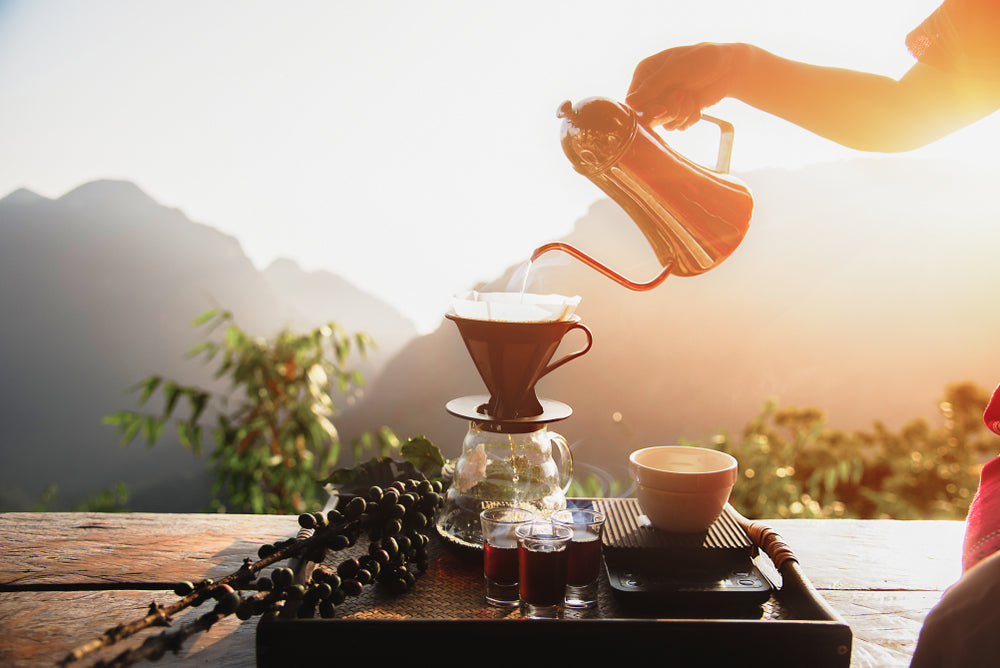

· By Jen Biro
The Secret is in the Extraction of Your Coffee
- Caffeine (bitter)
- Acids (creates sweet/ sour flavor)
- Lipids (viscosity)
- Carbohydrates (viscosity/ bitterness)
- Sugars (sweetness/ viscosity)
Coffees will be extracted at different rates after going through the roasting process. Dark roasted coffees will have strongly developed sugars and oils because they have sat in the roaster for a longer period of time. In turn, the sugars in the coffee caramelize, creating a syrupy, heavy cup profile. Light to medium roasted coffees will have fruity and floral notes forward in the cup with an easy, crisp finish.
- Fruity and acidic notes are extracted first.
- Followed by sweetness and balance.
- Lastly the positive acidic notes.
Some things to note when brewing is that an under extracted coffee will develop sour notes. This is due to the grind size being too coarse. Over extracted coffees can develop a profile with pronounced bitterness, as the compounds that create sweetness and acidity will be overwhelmed. In order to avoid under extracted coffee, try a finer grind and brew for slightly longer. To avoid an over extracted coffee, try a coarser grind and brew for a shorter period of time.
External variables that influence extraction:
- Grind
- Water temperature
- Time
The grind is where you can exert the most control over the end result of your coffee. This is the make or break point for how delicious your cup will be. Extraction occurs quicker with coarsely ground beans, as the water will have little resistance to work through and less time in contact with the grinds. This can cause an increase in acidity, resulting in a weak cup with fewer flavor compounds. Extraction for finer ground coffee will occur much slower since the water will have more resistance to work through and will have more contact time with the grinds. This can result in an intensely bitter cup. If you find your coffee is either too weak or too strong, start by making minor adjustments to the grind size. For most brew methods your total time to brew should be anywhere between 3-5 minutes.
Your water temperature should be between 195-205° F/ 91-96° C. Use filtered water whenever you brew. This will reduce the amount of unnecessary minerals contained in hard water. One little thing to note is that whatever brew method you choose, make sure you have an even bed of grounds for the water to run over. An even bed of grounds will ensure that when the water meets the grounds, you extract each and every particle for a well rounded profile.
One of the best parts about drinking coffee is how much control you can exert over the end result. As you just read, the size of the grind has much to do with the type of flavor you will extract. You may go through a series of trial and error when brewing. Especially if you switch from one coffee to another. While all coffees have the potential to be unforgettable, it can all go sideways is your grind is off. The best way to understand how to brew your perfect cup is to have fun experimenting with different coffees, grind sizes, and brew methods. You will find that by using the same coffee but with varying brew methods, you can extract all kinds of unique flavors! Check out our site at vailcoffee.com for a quick guide to multiple brew methods.
Fuel Your Adventure® with Vail Mountain Coffee & Tea Co.!